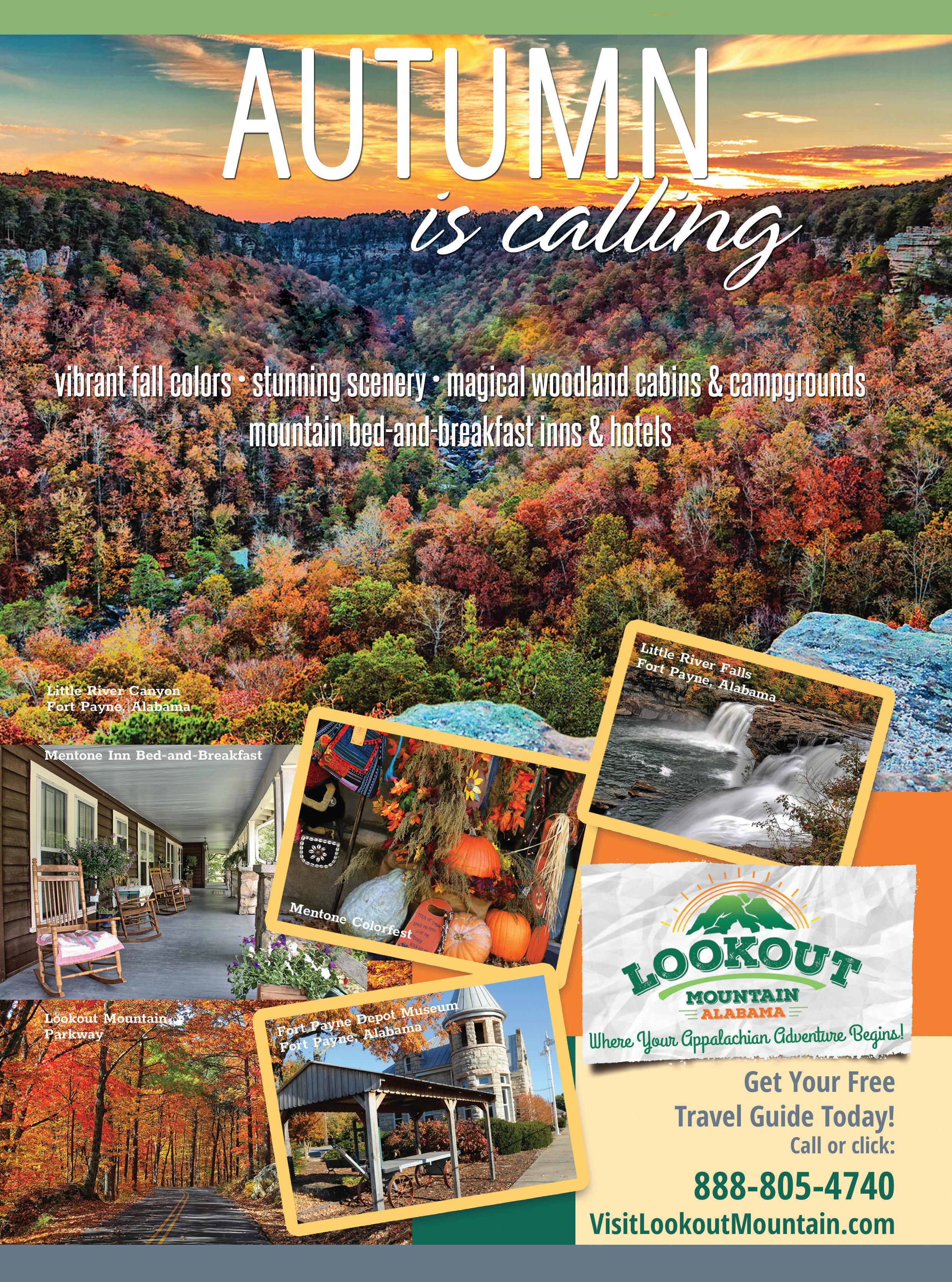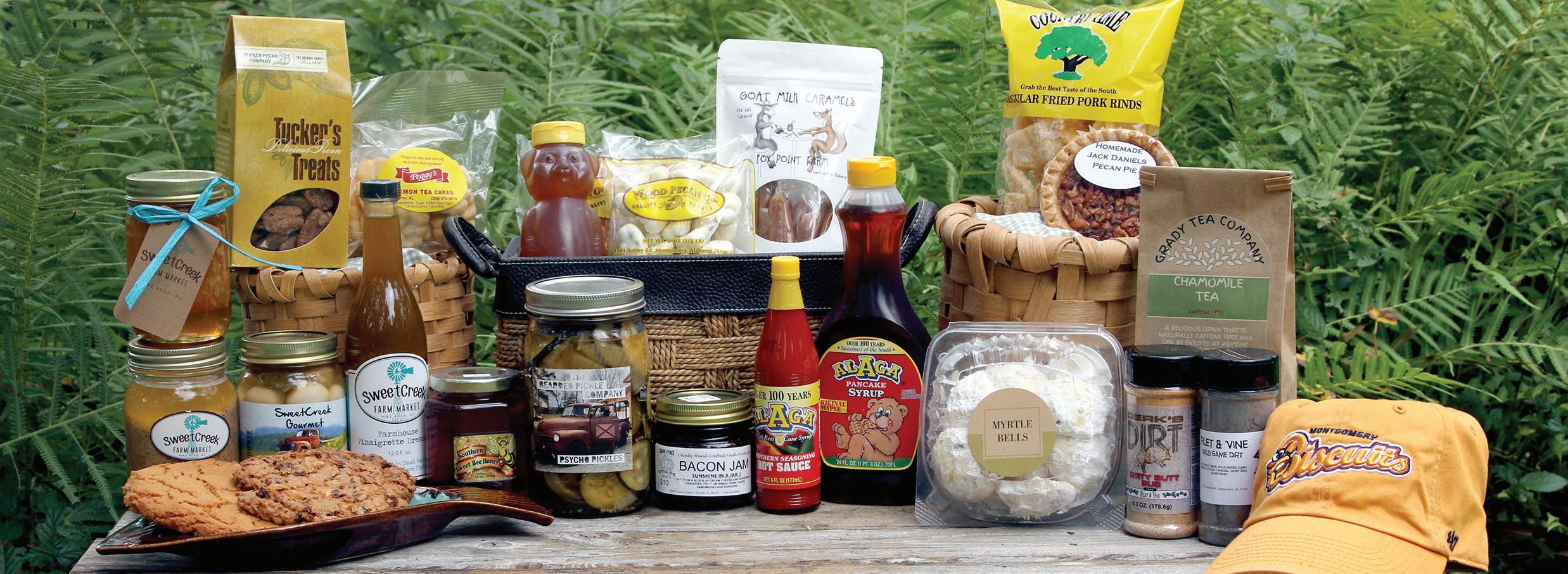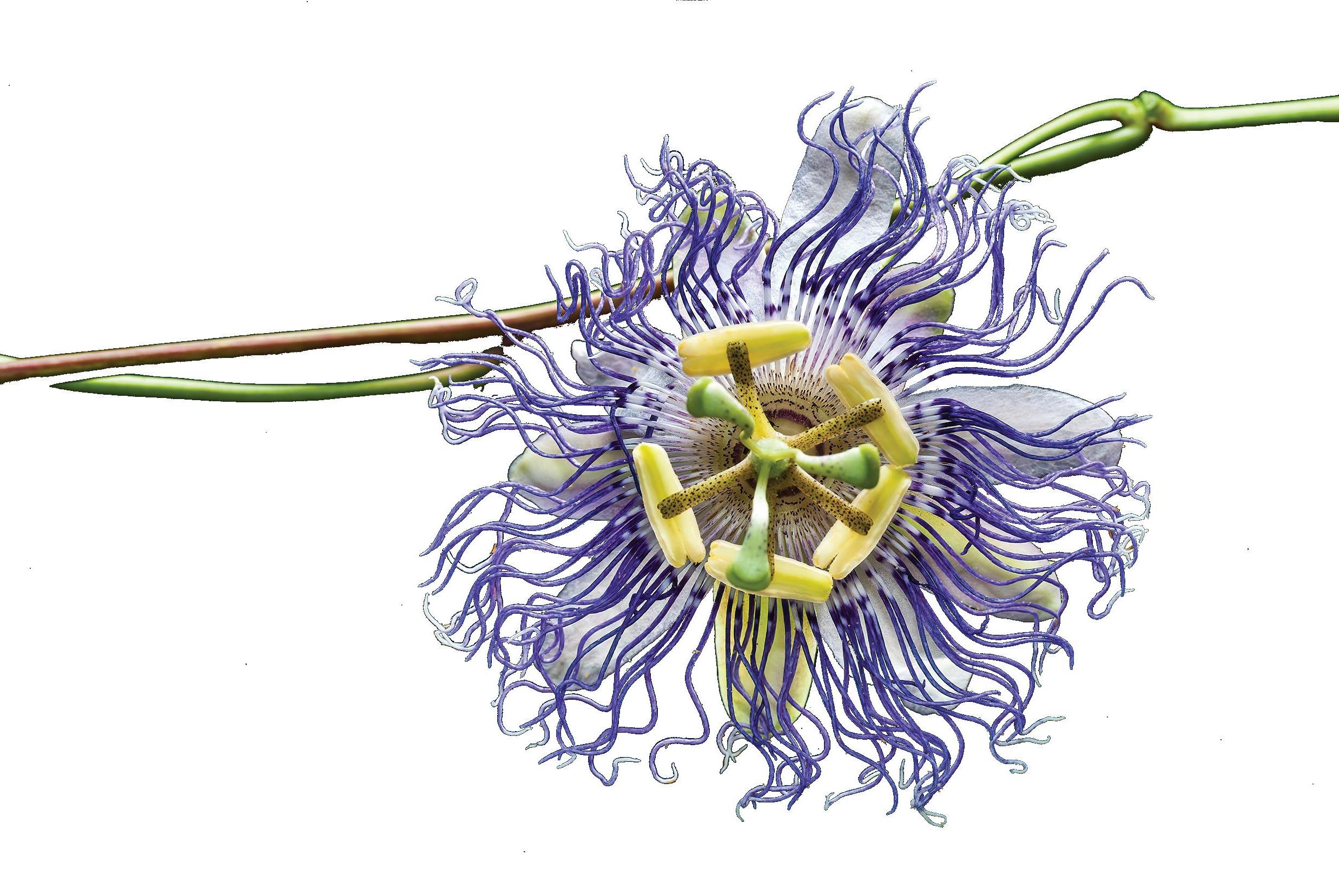
9 minute read
Black Belt tastes
By Jennifer Kornegay
Alabama’s Black Belt region is so named for the fertile soil blanketing its gentle hills and flatlands, earth that yields bountiful crop harvests and abundant outdoor pursuits. But the people here are as productive as the land; their creative talents and hard work have thrived for generations and resulted in a wealth of handmade and handcrafted delights. Now, everyone can explore the area thanks to the recently created “Flavors of the Black Belt” Trail.
The Trail helps people take a self-directed trip to basically eat their way through the Black Belt, with a booklet highlighting restaurants, cafes and shops that sell locally made food products. It is an initiative of Black Belt Adventures, a tourism marketing organization that works to bring more visitors to the area, and director Pam Swanner explained how the Trail developed from a board member’s observation.
“Board member Dexter McLendon, mayor of Greenville, not ed that there are many small-batch, hand-crafted foodstuffs and drinks created by the locals throughout the region that deserve recognition,” she says. That sparked the idea for the Trail and its focus on the region’s resourcefulness in the form of the flavors it has fostered. Black Belt Adventures, as well as the multiple restau rants, shops and makers included on the Trail, hope it will entice people to go get a taste of the area – and spend money.
Amber Anderson, owner of and baker/cook at FPH Bakery in Union Springs, has already seen some traffic from the Trail. “I have reopened (after COVID-19 mandated closings), and things are getting somewhat back to normal,” she says. “I’ve had more and more people from out of town who’ve not been here before, and I think some of that is due to the Trail.”
The bakery and other stops on the Trail have booklets for customers to grab, and Anderson says they’re flying out the door, noting that almost everyone coming in is taking one when they

PHOTO COURTESY ALABAMA BLACK BELT ADVENTURES.
The “Flavors of the Black Belt” Trail has a handy guide booklet that features a smorgasbord of things to see, do and, of course, eat. And it’s not just restaurants featured. The Trail places equal emphasis on the region’s bakers, brewers, coffee roasters, sauce makers, candy creators and more, plus the markets and shops that sell their wares. There’s never been a better time to take a backroads trip and discover some of the region’s culinary and cul tural character. Here are a few highlights from the Trail to help you find your favorite flavor.
FPH Bakery, Union Springs
This café in downtown Union Springs is beloved for a bevy of baked goods made by owner and self-taught baker and cook, Amber Anderson. Her homey offerings like chicken salad, a variety of soothing soups and comforting casseroles draw hungry diners come lunchtime.

leave. Swanner echoed Anderson. “We’ve already had to replenish the Flavors Trail booklet in several of the retail locations,” she says.
Anderson is thrilled FPH Bakery was included. “I think the Trail is a great thing; I think it encourages people to get out and about in the area, and it helps small businesses like us that are off the beaten path a bit,” she said.
Another stop on the Trail, Jefferson Country Store in Marengo County, definitely falls into the “off the beaten path” category, and owner Betsy Compton Luker is also proud to be a part of the Trail. “We love that we’re included, and so do our customers,” Luker says. “It’s fun because it is validating to them. They say, ‘Hey. This place we love is as great as we think it is.’”
Chef David Bancroft, who owns barbecue joint Bow & Arrow plus the fine-dining institution Acre, both in Auburn, praised the Trail and Black Belt Adventures’ overall mission and efforts. “I think it’s a great idea and believe it can help businesses, which need help especially now,” he says. “I love the organization and all that they do. I’m such a big believer in getting outdoors, connecting with that heritage and discovering all of the Black Belt’s great resources.”
While the initial launch of the trail was delayed due to COVID-19, Black Belt Adventures is turning the pandemic-related travel restrictions to its advantage, promoting the Trail as a “back road” trip that offers a safer alternative to some other types of travel. “Road trips have regained popularity, and the Black Belt region is the perfect destination to fulfill that demand,” Swanner says.
It won’t cure COVID, but simply wandering is a pastime Bancroft believes can address a lot of what ails society today. “So many people think the world is what exists on that little screen in their hand,” he says. “But it’s not. The world is down that dirt path, along that trail, waiting at that little farm stand.”
Everyone hopes the virus won’t forever dictate our future, and Luker is optimistic, sharing encouragement to fellow business owners whenever she can. “I know it’s been hard for people in our business, but I just want to tell others to keep going, keep digging down to find your strength,” she says. “There are so many great flavors in our area and in our state to experience, and the more we focus on that, I think we can make it.”

Bates House of Turkey, Greenville
This spot is the restaurant arm of Bates Turkey Farm. Opened in 1969, as its name suggests, this eatery focuses on the farm’s fowl, its menu stacked heavy with gobble, gobble good selections like smoked turkey sandwiches and turkey salad.
Gaines Ridge Dinner Club, Camden
A historic setting and historically delicious food await diners at this Black Belt institution. Housed in a circa 1827 home, the Gaines Ridge Dinner Club has been serving up simple yet special fine-dining dishes since 1985.
Mel’s Dairy Dream, Monroeville
Not far from the old courthouse so tied to one of our state’s most iconic books, To Kill a Mockingbird, Mel’s Dairy Dream sits on another site of heritage, the spot where the childhood home of Mockingbird author Harper Lee once stood.
Doughnut King, Eufaula
There’s nothing fancy here, but the variety of glazed, iced and filled snacks you’ll find in this east Alabama favorite are definitely fit for royalty.
PHOTO BY LANA POUNCEY.
Jefferson Country Store, Marengo County
The small white wooden building on a rural highway has been meeting the needs of its community for more than 50 years, and today, Betsy Compton Luker and her husband Tony are at the helm, still providing everyday essentials (bread, milk, hoop cheese, snacks) as well as local products like honey and more.
Priester’s Pecans, Fort Deposit
Pop into the Priester’s Pecans shop and go nuts. You can buy raw and roasted pecans, chocolate-covered pecans, pralines, pecan brittle, pecan logs, pecan-studded divinity and more.
Black Belt Treasures, Camden
Find a bevy of Black-Belt-made items all in one place at this charming store. Stock up on homemade jellies and sauces as well as rich cheese straws.
SweetCreek Farm Market, Pike Road
Find the tasty fruits (and veggies) of area farmers’ labors and love at this bustling farm stand: fat scarlet tomatoes; pale yellow squashes; fuzzy, fragrant peaches; and sweet, seedy muscadines.

Cultivating the curative powers of plants
Passionflower
During these past months of uncertainty and stress, many of us have come to appreciate the restorative power of plants. It’s an appreciation worth cultivating.
That’s because plants have so much to offer us. The simple act of tending them in our own yards and houses or admiring them in the landscapes around us is quite therapeutic, but the plants themselves are also filled with curative compounds.
Most of us know that such beloved herbs such as mint, rosemary, sage, lavender, basil and thyme have both culinary and medicinal uses. However, we may not know that ornamental plants (camellias, roses, hollies, as well as annual and perennial flowers, grasses and the like) also possess medicinal properties. Nor might we realize that common “volunteer” (some would say “weedy”) native and non-native plants — from pine and sweet gum trees to goldenrod, dandelion and chickweed — have redeeming medicinal uses, too.
In fact, according to medicinal plant expert Tia Gonzales, “You can’t walk outside your house and touch a plant that doesn’t have some medicinal properties. It’s just a matter of learning to recognize and appreciate them.” As a horticulturist, herbalist and manager/curator of Auburn University’s Medicinal Plant Collection, Tia has a deep understanding of, and contagious passion for, the curative powers of plants. And this year in particular, can’t we all use a dose of plant medicine? That’s why I asked her to suggest a few helpful medicinal plants that all of us can easily grow and use.
Katie Jackson is a freelance writer and editor based in Opelika, Alabama. Contact her at katielamarjackson@gmail.com.
Naming just a few isn’t easy, but Tia narrowed it down to these five plants, all of which can be used to brew simple teas for the treatment of insomnia and anxiety, common problems especially during these stressful times.
Passionflower (Passiflora incarnata; also known as maypop) is native to Alabama and grows well pretty much anywhere. It has beautiful flowers, is a host plant for Gulf fritillary butterflies and bees love it, too.
Catnip (Nepeta cataria), a member of the mint family, tolerates a wide range of growing conditions and can be grown in beds or containers; however, if you want to keep the cats out of it, Tia suggests planting it in a hanging basket. It’s also great mosquito repellent.
Lemon balm (Melissa officinalis), another mint family member, is also easy to grow and it can repel mosquitoes. In addition to using it as a tea, Tia said it’s ideal for use as a relaxing bath that calms anxious adults and wound-up children.
Lavender has many fine qualities, but it can be hard to grow in Alabama unless you use Lavandula x intermedia varieties and cultivars, which are suited to our soils and weather. Once established, though,


it’s beautiful and can be used for teas, as a flavoring, for aromatherapy and as an essential oil.
Chamomile
is commonly used as sleep-promoting tea, but it has many other uses, including lightening and conditioning hair. Plants may be of German (Matricaria recutita) or Roman (Chamaemelum nobile, also known as English and Russian chamomile) lineage but both can be grown in Alabama. However, Tia said they don’t like the heat and will do best in cooler seasons.
To learn more about growing and processing these and other medicinal plants, Tia suggested two books: Making Plant Medicine by Richo Cech and Rodale’s Twenty-first Century Herbal Guide by Michael Balick. Auburn’s Medicinal Plant Collection garden is currently closed for relocation but when it reopens, Tia will host frequent talks, tours and plant sales, details of which will be posted on its Facebook page.
OCTOBER TIPS
• Plant cool-season vegetables such as leafy greens and root crops. • Plant shrubs, trees and spring-blooming bulbs. • Collect and save seed from your favorite flowers, herbs and vegetables. • Clean and store summer gardening tools and equipment. • Refresh mulch around trees and shrubs. • Keep bird feeders and baths full.


